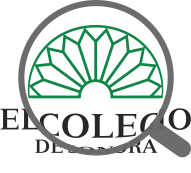Plurality and legal loopholes in eco-laws related to protected natural areas within state jurisdiction in Mexico
Pluralidad y lagunas jurídicas en ecoleyes relacionadas con áreas naturales protegidas de competencia estatal en México
| dc.contributor.author | Castro Salazar, Jesús Ignacio | |
| dc.contributor.author | Tovar Cabañas, Rodrigo | |
| dc.coverage.spatial | MX-SON | en-US |
| dc.creator | Castro Salazar, Jesús Ignacio;#0000-0001-9121-9312 | |
| dc.creator | Tovar Cabañas, Rodrigo;#0000-0003-4873-2502 | |
| dc.date | 2018-02-12 | |
| dc.date.accessioned | 2022-06-28T19:43:01Z | |
| dc.date.available | 2022-06-28T19:43:01Z | |
| dc.date.issued | 2018-02-12 | |
| dc.identifier | https://regionysociedad.colson.edu.mx:8086/index.php/rys/article/view/897 | |
| dc.identifier | https://doi.org/10.22198/rys.2018.72.a897 | |
| dc.identifier.uri | https://repositorio.colson.edu.mx/handle/2012/45932 | |
| dc.description | This article discusses plurality and legal loopholes in protected natural areas in Mexico, considering them a key tool for the conservation of hundreds of species and ecosystems. Based on the legislation in force until the end of 2015, the study was carried out on a nationwide scale in order to identify legal loopholes related to these areas. Firstly, the state of the art and the theoretical-conceptual approach guiding the study are presented; then the methodology used, based mainly on content analysis, is described. Likewise, results and discussions on plurality of laws in this regard are shown, as well as loopholes existing in them. Among the first ones, it should be noted that, even though in almost all states there are protected natural areas, most of them do not have laws regulating these areas. Also, many of them authorize self-consumption, without defining it. | en-US |
| dc.description | En este artículo se diserta sobre la pluralidad y las lagunas jurídicas en las áreas naturales protegidas en México, por considerarlas un instrumento de conservación clave para cientos de especies y ecosistemas. El estudio se realizó a escala nacional con base en la legislación vigente hasta finales de 2015, con el objetivo de identificar las lagunas legales relacionadas con dichas áreas; primero se presenta el estado del arte y el enfoque teórico-conceptual que guió al estudio, y luego se describe la metodología empleada, basada principalmente en análisis de contenido. También se muestran los resultados y las discusiones sobre la pluralidad de las leyes en la materia, y además las lagunas existentes en ellas. Entre los primeros destaca que, a pesar de que en casi todos los estados hay áreas naturales protegidas, la mayoría no cuenta con leyes para su regulación, y también sobresale que muchas autorizan el autoconsumo, aunque no lo definen. | es-ES |
| dc.description.abstract | This article discusses plurality and legal loopholes in protected natural areas in Mexico, considering them a key tool for the conservation of hundreds of species and ecosystems. Based on the legislation in force until the end of 2015, the study was carried out on a nationwide scale in order to identify legal loopholes related to these areas. Firstly, the state of the art and the theoretical-conceptual approach guiding the study are presented; then the methodology used, based mainly on content analysis, is described. Likewise, results and discussions on plurality of laws in this regard are shown, as well as loopholes existing in them. Among the first ones, it should be noted that, even though in almost all states there are protected natural areas, most of them do not have laws regulating these areas. Also, many of them authorize self-consumption, without defining it. | en-US |
| dc.description.abstract | En este artículo se diserta sobre la pluralidad y las lagunas jurídicas en las áreas naturales protegidas en México, por considerarlas un instrumento de conservación clave para cientos de especies y ecosistemas. El estudio se realizó a escala nacional con base en la legislación vigente hasta finales de 2015, con el objetivo de identificar las lagunas legales relacionadas con dichas áreas; primero se presenta el estado del arte y el enfoque teórico-conceptual que guió al estudio, y luego se describe la metodología empleada, basada principalmente en análisis de contenido. También se muestran los resultados y las discusiones sobre la pluralidad de las leyes en la materia, y además las lagunas existentes en ellas. Entre los primeros destaca que, a pesar de que en casi todos los estados hay áreas naturales protegidas, la mayoría no cuenta con leyes para su regulación, y también sobresale que muchas autorizan el autoconsumo, aunque no lo definen. | es-ES |
| dc.language.iso | spa | |
| dc.publisher | El Colegio de Sonora | es-ES |
| dc.rights | Derechos de autor 2018 Jesús Ignacio Castro Salazar, Rodrigo Tovar Cabañas | es-ES |
| dc.rights | info:eu-repo/semantics/openAccess | es-ES |
| dc.source | 2448-4849 | |
| dc.source | 1870-3925 | |
| dc.source | región y sociedad; Vol. 30 No. 72 (2018): May-August | en-US |
| dc.source | región y sociedad; Vol. 30 Núm. 72 (2018): mayo-agosto | es-ES |
| dc.subject | Ciencias Sociales | |
| dc.subject | State legislation | en-US |
| dc.subject | Environmental legislation | en-US |
| dc.subject | Protected natural areas | en-US |
| dc.subject | Legal loopholes | en-US |
| dc.subject | Mexico | en-US |
| dc.subject | Legislación estatal | es-ES |
| dc.subject | Legislación ambiental | es-ES |
| dc.subject | Áreas naturales protegidas | es-ES |
| dc.subject | Lagunas del derecho | es-ES |
| dc.subject | México | es-ES |
| dc.subject.lcsh | State legislation | en-US |
| dc.subject.lcsh | Environmental legislation | en-US |
| dc.subject.lcsh | Protected natural areas | en-US |
| dc.subject.lcsh | Legal loopholes | en-US |
| dc.subject.lcsh | Mexico | en-US |
| dc.subject.lcsh | Legislación estatal | es-ES |
| dc.subject.lcsh | Legislación ambiental | es-ES |
| dc.subject.lcsh | Áreas naturales protegidas | es-ES |
| dc.subject.lcsh | Lagunas del derecho | es-ES |
| dc.subject.lcsh | México | es-ES |
| dc.title | Plurality and legal loopholes in eco-laws related to protected natural areas within state jurisdiction in Mexico | en-US |
| dc.title | Pluralidad y lagunas jurídicas en ecoleyes relacionadas con áreas naturales protegidas de competencia estatal en México | es-ES |
| dc.type | info:eu-repo/semantics/article | |
| dc.type | info:eu-repo/semantics/publishedVersion | |
| dc.audience | generalPublic | |
| dc.identificator | 5 |
Files in this item
| Files | Size | Format | View |
|---|---|---|---|
|
There are no files associated with this item. |
|||










